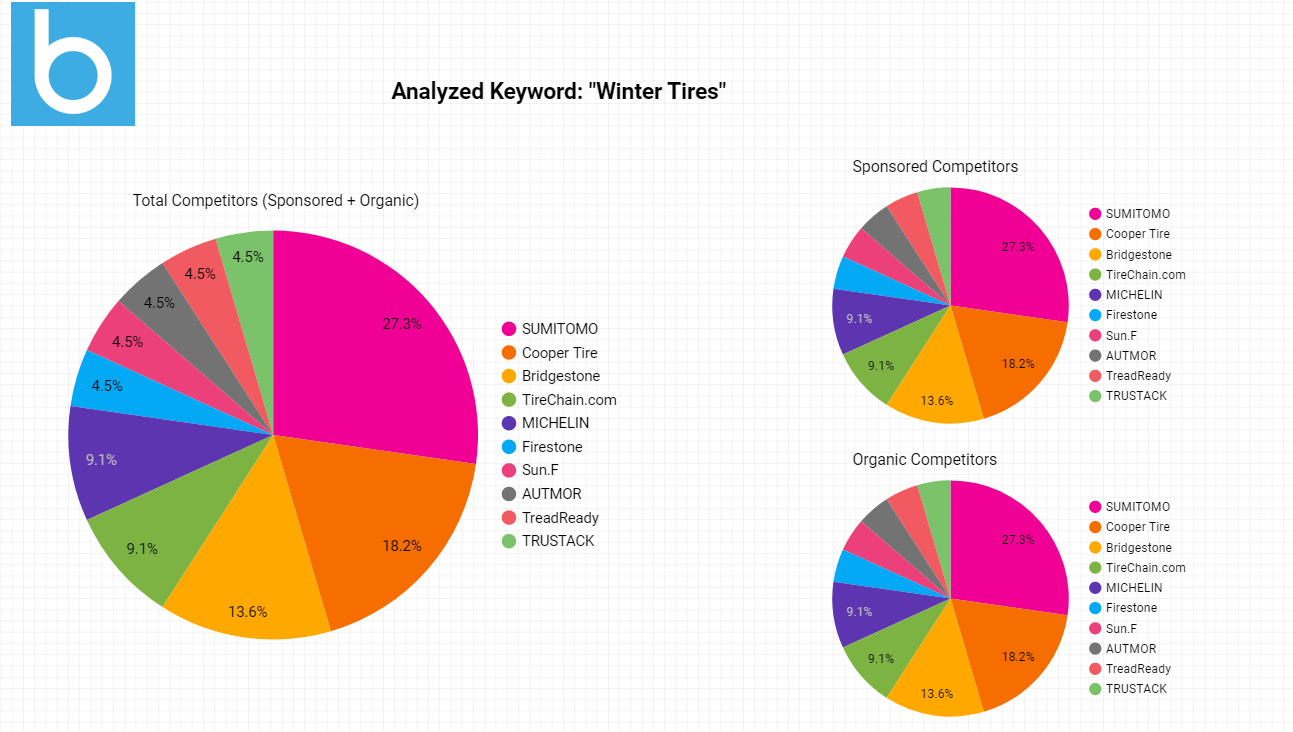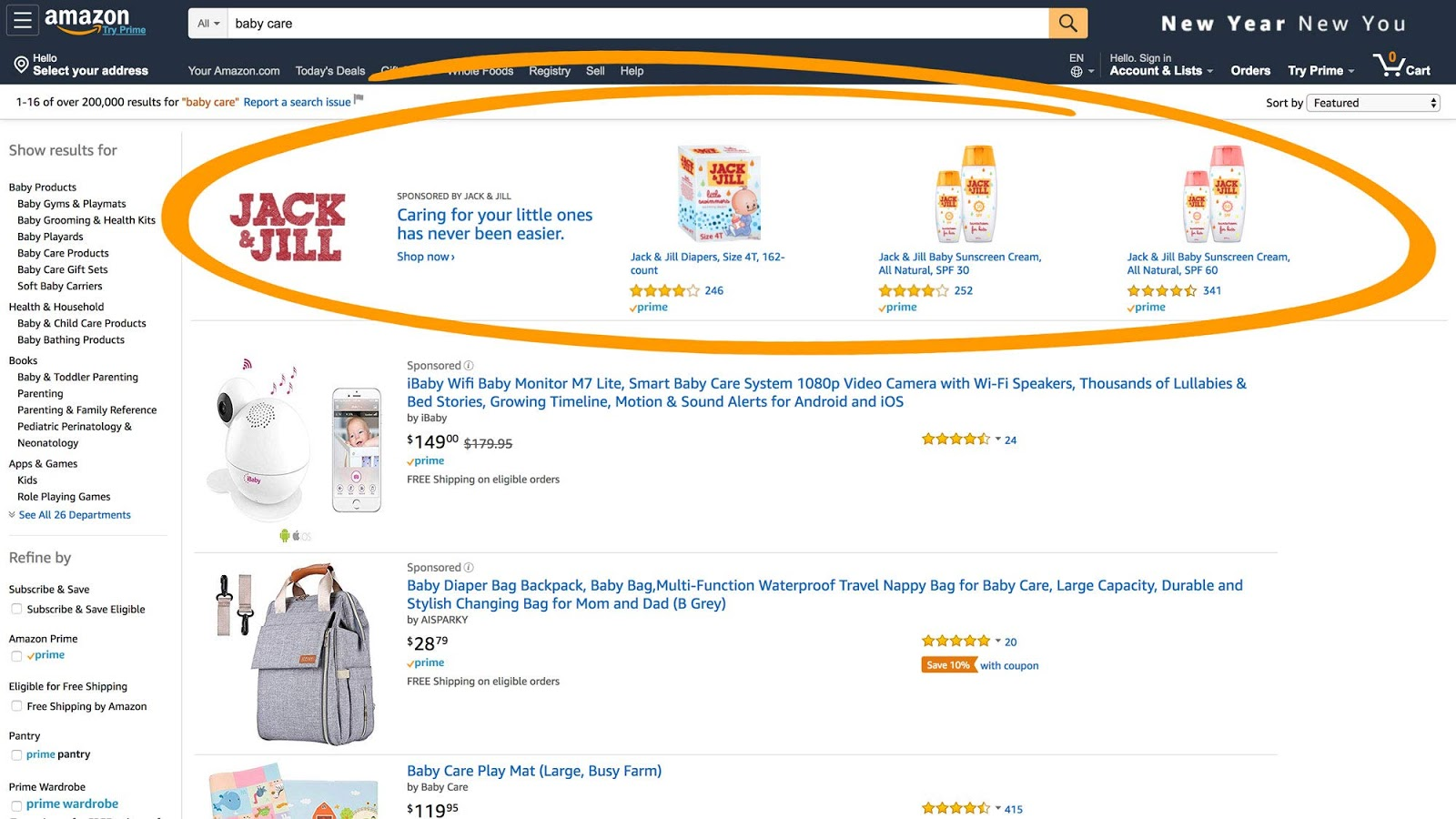Please note this is an older article. We advise you to check out the 2022 version.
Let’s start with the obvious: there is no one-size-fits-all approach for determining optimal PPC spend on Amazon. Every presence on the marketplace is different, and each brand will have different goals in terms of growth.
Bobsled’s PPC expertise as an Amazon agency has been formally recognized by Amazon Advertising. We’ve used our wealth of experience managing millions of dollars on the platform to identify the steps successful brands take in order to decide upon their paid advertising budget for Amazon.
In this article we’ve outlined the importance of PPC on Amazon, thresholds for determining budget threshold, ROI considerations, ad type ratios, scaling results over time, augmenting performance with ad tech and some general tips about how to monitor your paid ad spend.

Why is Amazon PPC advertising important?
Amazon PPC helps you temporarily own valuable real estate on the Amazon marketplace. By getting your product in front of shoppers at the right time with paid ads, you can win clicks and sales from competitors.
It’s important to recognize the relationship between paid and organic placements:
- Paid placements are PPC ads that appear on the Amazon marketplace. You only pay if a customer clicks on your ad.
- Organic placements are the most relevant results based on the search inputs. You don’t pay anything if a customer clicks on your product listing.
By bidding on relevant search terms, brands provide a pathway for shoppers to buy their products through advertising. Effective PPC advertising generally results in more paid sales, more customer reviews and better organic positioning. Even incumbent brands with thousands of glowing customer reviews and optimal Best Seller Rank (BSR) will continue advertising aggressively on Amazon, as due to the competitiveness of the marketplace, there are always challenger brands looking to degrade their market share.
In summary; Amazon PPC is used to grow sales and protect market share.
Amazon PPC performance is measured using a metric called Advertising Cost of Sales (ACoS), which is displayed as a percentage. If a brand is observing 25% ACoS for an advertising campaign, that means they are spending $25 on ads for every $100 in sales from advertising.
How much should I spend on Amazon PPC?
Ask yourself the following questions in order to determine the optimal PPC budget for your Amazon goals.
Do I want to advertise all of my products that are being sold on Amazon?
Often brands decide to take an 80/20 approach, and focus solely on the top 20% of their product catalog.

What is the profit margin across my catalog on a SKU level?
This can be a challenging exercise and often requires inputs from various internal departments. But it’s an incredibly worthwhile exercise because it illustrates exactly how much ad spend bandwidth you have for every product.
What is the percentage of sales coming from advertising on a SKU level?
Certain products may need more of a paid boost versus products that hold their own with organic sales.
What is the point of diminishing returns across each product type?
If your ACoS is lower than your profit margin, you are not overspending, and you should be looking to scale up as much as you can until you reach the point of diminishing returns.
Pro tip: Bobsled recommends dedicating 10% of the monthly advertising budget for experimentation with new campaign types and new platforms.
Share of Voice (SOV) –An Alternative Approach for Determining Advertising Budget
SOV analysis (also known as a ‘Share of Shelf’ analysis) highlights the brands whose products can be found on page one for particular keywords. Such reporting looks at which brands are occupying both paid and organic placements.
If a brand has determined their main keywords and are interested in capturing a larger piece of the market share pie, they should run regular SOV reports to see how their products are performing versus direct competitors. From there, they can choose to invest more or less compared to where they want to be.

Request a Share of Voice Analysis From the Bobsled Team
{{cta(‘af64d07e-3046-4416-b351-406121d6d1bc’,’justifycenter’)}}
Brand Awareness – A New Paradigm
Over the past couple of years, more brands are utilizing Amazon’s Demand-Side Platform (DSP) to target potential customers who are situated higher up the purchase decision funnel. With this strategy, rather than straightforward ROI, the goal is more about brand awareness and consideration, with a view of converting the customer at some point in the future.
Although Amazon PPC advertising generally targets customers who are ready to make a purchase, a brand awareness mindset can be adopted for the Sponsored Brands campaigns that exist within Amazon Advertising. This ad type features your product logo, a custom headline, and multiple products.

Above: Example of a traditional Sponsored Brands ad on Desktop. Source: Amazon Advertising
Although Sponsored Brands ads function as paid PPC placements, they can be considered more speculative versus other placement types. However, they’re incredibly useful over the long-term, especially for challenger brands, because they help keep your brand name, logo and products top of mind for high value potential customers.
In summary; 2021 should be the year where you decide what percentage of your branding budget should be directed towards Amazon’s top of funnel advertising solutions, as over time, these speculative efforts will really help move the needle.
Check out Amazon Sponsored Brands Video Ads Best
Practices & Case Study
What is considered good ROI for Amazon PPC?
As mentioned earlier, ACoS should be directly to profit margin on a SKU level, and so what is deemed ‘acceptable’ should vary from product to product. Yet an average of 25% ACoS across all campaigns is still accepted as the norm for established, highly optimized advertising campaigns.
However, in the era of omnichannel marketing, performance should not be analyzed solely through the prism of ROI. The customer journey is not linear, and users exposed to ads on Amazon may even purchase those products in store.
Therefore, brands need to intimately understand the standard lifecycle for their target customer base. By researching extensively, or working with a partner that has unique product category insights, brands will get a better idea of how Amazon PPC fits into the bigger picture, and this will provide more clarity about what average ACoS to aim for on Amazon.
How should I divide my PPC spend across different ad types?
Here are the most common ad type breakdowns we see for successful brands selling on the Amazon channel.
Amazon Advertising (PPC, Solely on Amazon)
- 75% on Sponsored Products
- 20% on Sponsored Brands
- 5% on Sponsored Display*
*With the introduction of new features on Sponsored Display we anticipate more budget being gradually dedicated towards this campaign type in 2021.
Amazon DSP (Programmatic Display, Video, and Audio Ads
Both on and off Amazon)
Before taking the DSP plunge, a brand should feel confident about the optimization level of their Amazon Advertising PPC campaigns. Once you’re hitting the point of diminishing returns with your PPC campaigns, you’re ready for DSP.
Amazon DSP representatives advise that for $5 spent on Amazon Advertising $1 should be spent on Amazon DSP ($500k annually on Amazon Advertising should translate to approximately $100k annually on DSP). At Bobsled, we’ve found this ratio to work well for most brands.
Here are some strategic DSP tips:
- Start from the bottom of the funnel (past customers) and work your way up (lookalike audiences, in-market audiences).
- Don’t compare DSP performance metrics to Amazon Advertising directly. They are completely different platforms and need to be viewed as such.
- OTT ads are changing the video ads game, and should definitely be on your radar, even if you’re a brand that’s never done any video advertising in the past.
Check out Amazon OTT – Democratizing Video Advertising
How should I optimize my Amazon PPC spend over time?
Compared to other channels such as Walmart and Instacart, Amazon provides comprehensive PPC reporting, and this analysis can help brands optimize their PPC strategy over time.
Here are some important optimization tips:
- A quick and easy way to see if your campaigns are hitting your daily budget early is the ‘Almost or out of budget filter’ in Amazon’s dashboard.

- Brands should combine the advertising reports with business reports to see the impact advertising has on Total Sales (should be in the region of 25% coming directly from PPC ads for most brands on Amazon)
- The advertised product report can help brands get summarized impressions, clicks, spend, sales and ACoS on a product level, and you can compare this to detailed performance with the ASIN business report.
- Regular advertising optimization tasks include: adding converting customer search terms as keywords, negative keywords, and optimizing bid amounts.
- Be sure to factor in seasonal peaks and troughs. Q4 can account for 40% to 50% of the annual advertising budget for products used throughout the year. For highly seasonal products, spend should be concentrated towards the highest traffic months, but advertising should not be entirely turned off in off-months, as this will help you retain a better BSR
- Make sure to allocate approximately 10% of your total ad budget to new and/or more speculative campaign and targeting options.
How can ad tech help with Amazon PPC?
In short, ad tech solutions automate a lot of PPC management. Some benefits include:
- Ensuring that you don’t go over the dedicated monthly budget (automated rules for monthly budget optimization).
- Help you with forecasting advertising budgets based on historic performance.
- Improve ROI by using rule based or AI driven automation.
- Paints a picture about the effects of advertising beyond ROI (they offer SOV analysis, competitive landscape analysis etc).
Check out Marketplace Ad Tech: How Does It Work?
Tips for getting your Amazon PPC spend level right
- Where appropriate, make sure that you are using all available targeting options from Amazon (ASIN targeting, category targeting for both Sponsored Products and Sponsored Brands campaigns). Targeting options with lower competition generally mean a better ROI compared to competitive, saturated targeting options.
- Add monthly budgets on a portfolio level to ensure adequate spend across your entire account.
- Support new product launches by advertising the new products against established products from your product line. This can inspire customers who are loyal to the brand to try out your new product.
- Automate keyword bidding by setting ROI targets. Within Amazon’s competitive and dynamic landscape, automated bidding is simply a must.
- Make sure you are running Sponsored Brands only towards products that you own the featured offer for. Sponsored Brands as a campaign type are not dependent on the featured offer – you may be running traffic to a competitor if you are not aware of this.
NEED HELP WITH AMAZON PPC?
Our team can help you establish a budget in alignment with your goals. We can identify opportunities in your Amazon advertising strategy and capture the right type of traffic, profitably. Find out how!
{{cta(‘a782d591-c424-4299-86df-4c6056b8fda8′,’justifycenter’)}}


